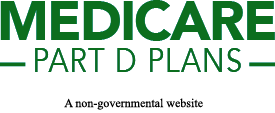Find a Medicare Part D prescription drug plan

Medicare Part D
Prescription Drug Coverage 2026
Best Rated Medicare Part D Plans
Looking for the best rated Medicare Part D plans? This article will explore some of the top plans for 2026, based on factors like coverage, cost, and customer satisfaction. Find out which plans excel and why they might be the best fit for you.
Key Takeaways
- The top-rated Medicare Part D plans for 2026 may include UnitedHealthcare, Humana, Aetna, Centene Corporation, and Cigna, likely recognized for comprehensive coverage and high customer satisfaction.
- Potential factors in choosing a Medicare Part D plan may include understanding drug coverage, evaluating pharmacy networks, and assessing overall costs, such as premiums and deductibles.
- The potential introduction of the Medicare Prescription Payment Plan in 2026 may simplify cost management, possibly allowing beneficiaries to better manage their out-of-pocket expenses.
Top 5 Best-Rated Medicare Part D Plans for 2026
Choosing the right Medicare Part D plan could transform your healthcare experience, likely providing you with peace of mind and financial security. The top-rated plans for 2026 will likely offer a blend of comprehensive drug coverage, competitive premiums, and high customer satisfaction.
UnitedHealthcare, Humana, Aetna, Centene Corporation, and Cigna will likely bring exceptional offerings. Each of these insurance companies could bring unique strengths to the table, whether it’s lower premiums, broad geographical coverage, or specialized drug plans that could be catered to specific needs.
Additionally, the insurance company landscape is competitive, possibly ensuring consumers have various options.
These top-rated plans may also be backed by extensive pharmacy networks and low copays, likely making it easier for beneficiaries to access their medications without financial strain. Let’s delve into what might make these plans stand out, starting with UnitedHealthcare.
UnitedHealthcare Medicare Part D Plans
UnitedHealthcare will likely stand tall with a CMS star rating of 3.5 out of 5 stars, reflecting a solid level of customer satisfaction. Covering over 43 million people as of 2024, UnitedHealthcare’s reach in the Medicare market will likely be expansive, possibly ensuring that beneficiaries across all 50 states and several U.S. territories could have access to their plans. This extensive geographical coverage could potentially ensure that no matter where you live, you could have access to their comprehensive services.
The average monthly premium for UnitedHealthcare’s Medicare Part D plans may be set around $59.94, likely making it a competitively priced option that could balance affordability with comprehensive drug coverage.
With a focus on providing extensive coverage and a broad pharmacy network, UnitedHealthcare will likely remain a strong contender in the Medicare Part D landscape.
Cigna Medicare Part D Plans
Cigna’s Medicare Part D plans may be celebrated for:
- High value and patient satisfaction, possibly making them a go-to choice for many beneficiaries
- Cost-effectiveness, likely catering to the financial needs of seniors
- Some plans may offer $0 premiums, possibly increasing accessibility
- Extensive pharmacy networks could potentially ensure that beneficiaries could easily find convenient locations to access their medications
What might set Cigna apart may be its comprehensive drug formulary, which will likely include a significant number of commonly prescribed medications.
This could potentially ensure that beneficiaries have the coverage they need without worrying about unexpected out-of-pocket costs. With Cigna, you could expect a balance of affordability and extensive drug coverage that meets a wide range of healthcare needs.
Humana Medicare Part D Plans
Humana’s Medicare Part D plans will likely provide excellent coverage for essential medications, such as insulin. With various options that might feature both low premiums and extensive coverage, Humana’s plans will likely be designed to be both affordable and comprehensive.
U.S. News rated Humana’s plans with an overall rating of 3.0 stars, highlighting their reliability and customer satisfaction.
Despite an average rating of 3 out of 5 stars, Humana’s focus on essential medications and cost-effective plans could make it a strong option for beneficiaries looking for robust drug coverage. Whether you’re managing a chronic condition or just looking for reliable prescription drug coverage, Humana’s plans could offer a solid balance of affordability and comprehensive benefits.
Aetna Medicare Part D Plans
Aetna’s Medicare Part D plans, marketed under the SilverScript brand, may be known for their solid drug coverage and high customer service ratings. These plans will likely be designed to provide comprehensive coverage, possibly ensuring that beneficiaries have access to the medications they need without excessive out-of-pocket costs.
Aetna’s dedication to customer service has been reflected in its high ratings, likely making it a reliable choice for those who prioritize support and assistance. With a strong focus on offering extensive drug coverage and excellent customer service, Aetna’s Medicare Part D plans could be a standout option for many beneficiaries.
Blue Cross Blue Shield Medicare Part D Plans
Blue Cross Blue Shield Medicare Part D plans have an average rating of 3.3 out of 5 stars from CMS, indicating a solid performance in terms of customer satisfaction and coverage. Known for their generous coverage of insulin medications, these plans could be particularly beneficial for beneficiaries managing diabetes.
Covering over 27 states, Blue Cross Blue Shield will likely cover a significant portion of the population, possibly ensuring access to their services and providing extensive accessibility.
With a focus on comprehensive drug coverage and accessibility, Blue Cross Blue Shield’s Medicare Part D plans may be a reliable choice for many beneficiaries.
Possible Factors in Choosing a Medicare Part D Plan
Choosing the right Medicare Part D plan might involve more than just looking at premiums and deductibles.
It’s about understanding how each plan could meet your specific needs, such as the medications covered, available pharmacies, evaluating plans based on drug coverage, pharmacy accessibility, and potential impacts on existing health coverage.
Plans might vary significantly in terms of coverage, costs, and benefits, making it essential to compare options thoroughly. Considering various factors like customer experience, drug coverage, and overall costs could help beneficiaries make informed choices that best suit their healthcare needs.
Potential Cost Considerations
Costs will likely be a critical factor when choosing a Medicare Part D plan. Opting for a plan that may offer a low monthly premium might seem attractive, but it could lead to higher overall expenses if the coverage is limited. Additionally, beneficiaries with higher incomes may face additional premium surcharges ranging from around $13.70 to $85.80.
Therefore, it’s essential to compare costs and understand the full cost of each plan.
Drug Coverage and Formularies
Understanding a plan’s formulary may also be crucial as it will likely outline which drugs may be covered and their associated costs. Before enrolling, verify that your medications may be included in the plan’s formulary to help avoid unexpected out-of-pocket expenses.
Pharmacy Networks
The potential inclusion of your pharmacy in a Medicare Part D network may also influence your out-of-pocket costs. Preferred pharmacies within certain plans may offer lower costs for medications, possibly making it easier to manage your healthcare expenses.
Ensuring that your preferred pharmacy is included in the plan’s network could lead to substantial savings and convenience.
How Medicare Part D Plans Are Rated
Understanding how Medicare Part D plans are rated could help you make an informed decision. These plans will likely be evaluated using a star rating system set by the Centers for Medicare & Medicaid Services (CMS), which allows consumers to compare plan quality effectively.
The evaluation process includes multiple quality and performance measures, such as coverage availability, average costs, and beneficiary satisfaction. These ratings provide a comprehensive view of each plan’s performance and reliability.
The CMS star ratings system assigns scores based on various performance measures, helping beneficiaries assess the quality of their Medicare Part D options. In addition to CMS ratings, customer satisfaction surveys and expert reviews may also play a significant role in determining the overall rating of a plan. These combined ratings will likely offer a well-rounded perspective on how each plan performs in real-world scenarios.
CMS Star Ratings
The CMS star rating system evaluates Medicare Part D plans based on up to 12 performance measures, including the quality of drug services and health outcomes. These ratings may help beneficiaries compare and select high-quality options, possibly ensuring they receive the best possible care and coverage.
The star ratings could be a valuable resource for assessing the overall performance and reliability of each plan.
Customer Satisfaction Surveys
Beneficiary feedback collected through customer satisfaction surveys could significantly impact the overall ratings of Medicare Part D plans. These surveys reflect user experiences and satisfaction levels, highlighting areas where plans excel and where improvements might be needed.
This feedback could be crucial for understanding how well a plan meets the needs of its beneficiaries.
Understanding Medicare Part D Costs
Navigating the potential costs associated with Medicare Part D plans might be complex, but understanding the different components could help you manage your healthcare expenses effectively. Costs for these plans may vary by plan. With the potential removal of the coverage gap, known as the donut hole, managing costs may become more straightforward for beneficiaries.
The potential inclusion of the Medicare Prescription Payment Plan may also provide a way to manage out-of-pocket costs. The spending threshold for out-of-pocket expenses under Medicare Part D may be set at $2,000, possibly affecting coverage phases and how costs might be managed throughout the year.
Understanding these components could help you plan your healthcare budget more effectively.
Monthly Premiums
The average premium for Medicare Part D plans in 2026 may be set at around $46.50. However, the cheapest Medicare Part D plan may vary based on drug needs and other costs. Based on data from recent years, Highmark Inc. has had the highest average monthly premiums for Part D plans, likely highlighting the importance of comparing costs to find the best fit for your budget.
Understanding the monthly premiums and their potential impact on your overall costs could be essential for paying for effective financial planning.
Annual Deductibles
Annual deductibles may be another critical component of Medicare Part D plans, which could potentially influence out-of-pocket costs for beneficiaries. The deductible amount may vary widely, with some plans offering deductibles as low as $0, while others could go up to around $590.
Understanding your plan’s annual deductible is crucial, as it will likely impact how much you may need to pay before your Medicare drug coverage kicks in.
Comparing annual deductibles across different plans could help you find an option that aligns with your financial situation.
Out-of-Pocket Costs
Out-of-pocket costs under Medicare Part D might include copays, coinsurance, and any costs incurred during the initial coverage phase. Typically, beneficiaries will likely pay up to 25% of both generic and brand-name drug costs as coinsurance during this phase.
Utilizing mail-order pharmacies might further reduce overall prescription costs by allowing patients to receive larger supplies of medications at a lower price. Understanding and managing these out-of-pocket costs will likely be essential for maintaining an affordable and sustainable healthcare budget.
Enrollment Periods and Eligibility
Enrolling in Medicare Part D requires understanding the specific enrollment periods and eligibility criteria. Eligibility is primarily for individuals with Original Medicare (Part A and/or Part B). Although Medicare Part D is optional, enrolling during the designated periods could help avoid penalties and ensure continuous coverage.
Enrollment periods are defined times when you can join, switch, or drop Medicare plans. These periods include:
- The initial enrollment period
- The annual open enrollment period
Each of these enrollment periods has specific rules and timelines that beneficiaries must follow to maintain their Medicare prescription drug coverage.
Initial Enrollment Period
The initial enrollment period for Medicare Part D lasts seven months. It begins three months before you turn 65, includes your birthday month, and ends three months after. If your birthday falls on the first day of the month, the enrollment period begins four months before and ends two months after your birthday month.
Enrolling during this period is crucial to avoid late enrollment penalties and ensure that your Medicare coverage starts on time.
Special Enrollment Periods
Special enrollment periods allow beneficiaries to sign up for Medicare outside of the standard enrollment times due to specific circumstances. For instance, if you lose other credible prescription drug coverage or move out of your plan’s service area, you may qualify for a special enrollment period.
It’s important to understand these rules, especially if you need to switch from a Medicare Advantage plan to a Part D plan.
Open Enrollment Period
The open enrollment period for Medicare Part D occurs annually from October 15 to December 7. During this time, beneficiaries can enroll in, switch, or drop their Medicare Part D plans.
This period is an excellent opportunity to reassess your healthcare needs and ensure that your plan continues to meet your requirements.
Avoiding the Medicare Part D Late Enrollment Penalty
Failing to enroll in a Medicare Part D plan when first eligible might lead to a late enrollment penalty, which adds to your monthly premium. This penalty is not a one-time fee but continues for as long as you have Medicare Part D coverage. Avoiding this penalty requires enrolling in a Part D plan during your initial eligibility period or maintaining other creditable drug coverage without breaks exceeding 63 days.
If you do not maintain continuous coverage, the penalty will apply whenever you enroll in a Medicare drug plan. Understanding the rules around creditable drug coverage and the steps to avoid the late enrollment penalty can save you from long-term financial burdens.
Creditable Drug Coverage
Creditable drug coverage is insurance that will likely be similar to Medicare coverage. This means the coverage may pay, on average, at least as much as standard Medicare prescription drug coverage.
Maintaining creditable drug coverage without breaks exceeding 63 days will likely be crucial to avoiding the late enrollment penalty. Always verify whether your current drug coverage qualifies as creditable to ensure continuous protection.
Penalty Calculation
The late enrollment penalty for Medicare Part D may apply as follows:
- Multiply 1% of the national base premium by the number of full months you were eligible but not enrolled in a plan.
- This penalty is added to your monthly premium for the duration of your Medicare Part D coverage.
- The national base beneficiary premium is updated annually, so the amount of the penalty may change over time.
Understanding how this penalty is calculated could help you plan your enrollment strategy effectively.
The Medicare Donut Hole Explained
The Medicare donut hole, or coverage gap, has been a challenging phase for many beneficiaries. Medicare drug plans categorize coverage into three stages: deductible, initial coverage, and catastrophic. The donut hole was a phase where beneficiaries were responsible for a higher percentage of their medication costs until they reached the catastrophic coverage phase. However, this threshold may no longer apply, possibly simplifying cost management for beneficiaries.
Aetna, among other providers, might offer additional drug coverage when beneficiaries reach the coverage gap, which could potentially ensure continuous support. Understanding these stages and how they might affect your out-of-pocket costs is crucial for effective financial planning and ensuring you could receive the necessary medications without excessive financial strain.
What Is the Donut Hole?
The donut hole, or coverage gap, is one of the three phases of Medicare Part D coverage, alongside the initial coverage phase and catastrophic coverage. During the initial coverage phase, beneficiaries will likely pay copays or coinsurance based on their drug’s formulary placement.
When combined, drug costs may reach up to $5,030, based on data from 2024. Beneficiaries will likely enter the donut hole and may pay up to 25% of retail costs for drugs until reaching the catastrophic coverage phase.
Although this threshold might not apply in 2026, understanding the concept could help in grasping how Medicare Part D’s structure impacts out-of-pocket costs.
Strategies to Manage Costs
To manage costs effectively, beneficiaries should take advantage of the Part D Senior Savings Model, which could potentially cap the copayment for a month’s supply of insulin at around $35. Planning for potential medication costs, especially during the various coverage phases, could alleviate financial burdens.
Comparing costs across different plans and opting for those that may offer lower copayments for essential medications may also help save money on overall expenses.
Comparing Medicare Part D Plans
Comparing Medicare Part D plans will likely be crucial to ensure you find the best fit for your prescription drug needs. Using the Plan Finder Tool on this website allows users to evaluate different plans side by side, considering various factors such as monthly premiums, annual deductibles, and drug formulary details.
Our website can help you find and compare health and drug plans in your area, making the selection process more straightforward.
Additionally, consulting one of our licensed agents can provide recommendations based on your health needs and budget constraints. Our agents offer insights from previous case studies and help you navigate the complexities of Medicare rules, ensuring you choose the most suitable plan.
See plans in your area instantly!
Advertisement
Using Our Website
By entering your zip code into the Plan Finder Tool on this website, members locate Medicare Part D plans that cover their prescriptions.
Users can find information such as monthly premiums, annual deductibles, and specific drug formulary details, helping them make informed decisions about their prescription drug plan.
Consulting Our Licensed Agents
Our licensed agents are trained professionals who can guide beneficiaries through the Medicare Part D selection process, ensuring they understand their options. These agents provide personalized recommendations, considering individual health needs and budget constraints, which can lead to more satisfied beneficiaries.
Consulting an agent will likely grant access to a wide range of Medicare Part D plans, covering various formulary options and pricing structures. Their ongoing support beyond enrollment can help beneficiaries navigate any future questions or plan changes.
Tips for Saving Money on Medicare Part D Plans
Saving money on Medicare Part D plans might involve:
- Researching plans that cover necessary drugs with affordable premiums and deductibles.
- Comparing different Medicare Part D plans to find potential cost savings and better coverage options.
- Opting for plans that may have lower copayments for generic prescriptions
Using mail-order pharmacies and preferred pharmacies may also help reduce prescription drug costs in the following ways:
- Mail-order pharmacies might offer lower copays and the convenience of receiving medications directly at home.
- Preferred pharmacies designated by your Medicare plan may provide pre-negotiated pricing.
- This pre-negotiated pricing could potentially lead to lower out-of-pocket expenses for patients.
By following these tips, beneficiaries could manage their healthcare costs more effectively and possibly ensure they receive the medications they need.

Generic vs. Brand Name Drugs
Generic medications could provide a cost-effective alternative to brand-name drugs, likely offering similar therapeutic benefits at a low cost. Opting for generic drugs could potentially reduce out-of-pocket expenses and make medications more affordable.
Brand-name drugs might come at a higher cost compared to their generic counterparts, so choosing generics whenever possible may be a smart strategy for managing healthcare expenses.
Medication Home Delivery
Mail-order pharmacies could provide a convenient way for patients to receive their prescriptions without the need to visit a physical pharmacy. Using mail-order services could potentially streamline the medication refill process, possibly eliminating the need for frequent trips to the pharmacy.
Additionally, mail-order pharmacies may offer lower prices for recurring medications, possibly leading to cost savings for patients.
Utilizing Preferred Pharmacies
Using preferred pharmacies designated by your Medicare plan may also lower certain prescription drug plans costs. Preferred pharmacies will likely offer pre-negotiated pricing that might result in lower out-of-pocket expenses for patients.
Beneficiaries should consider using preferred pharmacies to help manage their Medicare Part D costs.
Find a Plan and Enroll Online Yourself!
Advertisement
Summary
Navigating the complexities of Medicare Part D plans doesn’t have to be overwhelming. By understanding the top-rated plans, various factors in choosing a plan, and strategies for managing costs, you could make an informed decision that meets your healthcare needs and budget.
The top-rated plans for 2026, such as UnitedHealthcare, Cigna, Humana, Aetna, and Blue Cross Blue Shield, will likely offer a range of options that balance affordability and comprehensive coverage. From evaluating the potential costs and drug coverage to understanding enrollment periods and avoiding penalties, this article provides the essential information needed to navigate Medicare Part D.
Remember, comparing plans and consulting one of our licensed agents can further simplify the process. Armed with this knowledge, you can confidently select a Medicare Part D plan that provides peace of mind and financial security.
Frequently Asked Questions
What is the initial enrollment period for Medicare Part D?
The initial enrollment period for Medicare Part D spans seven months, beginning three months before your 65th birthday, including your birthday month, and concluding three months afterward. It’s essential to enroll during this time to ensure coverage without penalties.
How are Medicare Part D plans rated?
Medicare Part D plans are rated using a star rating system established by the Centers for Medicare & Medicaid Services (CMS), which likely assesses various factors like coverage availability, costs, and beneficiary satisfaction. This system could help you identify high-performing plans that best meet your needs.
What is the Medicare donut hole?
The Medicare donut hole, also known as the coverage gap, refers to a phase in Medicare Part D where beneficiaries may be faced with increased out-of-pocket costs for their medications until reaching catastrophic coverage. However, this threshold may no longer apply starting in 2026.
How could I avoid the Medicare Part D late enrollment penalty?
To avoid the Medicare Part D late enrollment penalty, ensure you enroll during your initial eligibility period or maintain continuous creditable drug coverage without any gaps longer than 63 days. This proactive approach might help you sidestep unnecessary penalties.
What are the potential benefits of using preferred pharmacies?
Utilizing preferred pharmacies could potentially reduce your prescription drug costs due to their pre-negotiated pricing, which may result in lower out-of-pocket expenses. This might lead to substantial savings for your healthcare budget.

Begin choosing your plan
Advertisement
ZRN Health & Financial Services, LLC, a Texas limited liability company.
